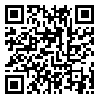Articles accepted at the time of publication
Back to the articles list |
Back to browse issues page
1- Vice-President of the Institute for Research and Planning in Higher EducationProfessor of Applied Linguistics and Education, The University of TehranHead of Department of English Language, The University of Tehran (Kish International Campus)Editor-in-Chief, Journal of Foreign Language Research (JFLR) , dahmardeh@ut.ac.ir
2- Visiting lecturer at Sirjan University of Medical Sciences
2- Visiting lecturer at Sirjan University of Medical Sciences
Abstract: (983 Views)
This study aims to investigate the representation of gender and intercultural competence in the images and texts of 15 Iranian secondary school English coursebooks, published over six decades. Gender representation was investigated using the framework proposed by Dahmardeh and Kim (2020), and the scale developed by Solhaug and Kristensen (2020) was used as the criteria for investigating intercultural competence. The data were coded and counted using manifest content analysis. The results showed that Iranian English coursebooks mentioned males and females unequally in their texts across different decades, with one gender being represented more in each decade. Regarding gender representation in the images, males were represented more than females in almost all decades. The representation of males and females in the books published in the 1970s was almost equal, followed by extreme and sudden changes in gender representation in the 1980s. However, the books published in and after the 2000s presented a balanced picture of males and females. The coursebooks dealt with intercultural competence in their texts and images very rarely, limiting this concept to religious issues and neglecting other aspects. In fact, the coursebooks addressed only one category out of the 11 categories. Finally, the study ends with implications for coursebook authors, materials designers, teachers, students, and teacher trainers.
Article Type: مقالات علمی پژوهشی |
Subject:
language teaching
Send email to the article author
| Rights and permissions | |
 |
This work is licensed under a Creative Commons Attribution-NonCommercial 4.0 International License. |






